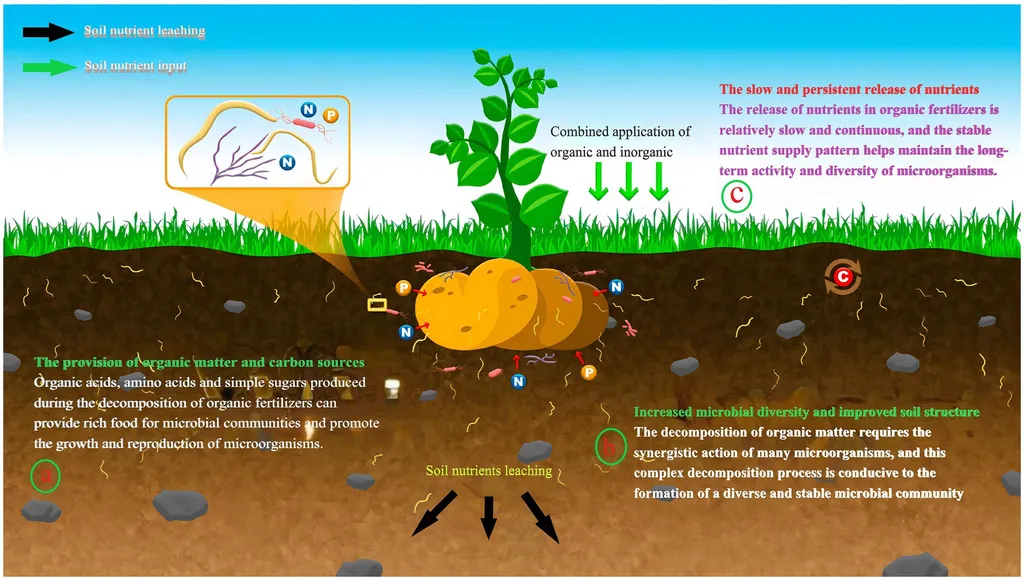In the quest to bolster soil health and agricultural sustainability, a groundbreaking study published in *Geoderma* sheds light on the intricate dance between organic fertilization, soil structure, and carbon sequestration. Led by Tianyu Ding from the State Key Laboratory of Soil and Sustainable Agriculture at the Chinese Academy of Sciences, the research delves into how different fertilization strategies influence soil macropore structure and particulate organic matter (POM) accumulation in Vertisols.
The study, conducted over eight years, compared four fertilization regimes: no fertilization, chemical fertilization (NPK), organic fertilization (OF), and a combination of both (NPKOF). Using advanced X-ray computed tomography, the team quantified POM fractions and macropore structures, revealing significant improvements in soil macropore structure in the top 10 cm layer across all fertilization treatments. Notably, organic fertilization and the combined approach dramatically increased bioporosity in the 10–20 cm layer.
“Biopores are crucial for water infiltration and root growth, and our findings show that organic fertilization significantly enhances their formation,” Ding explained. This enhancement is not just a boon for soil health but also holds substantial commercial potential for the agriculture sector. Improved soil structure can lead to better water retention, reduced erosion, and enhanced nutrient availability, all of which can translate to higher crop yields and more resilient farming systems.
The research also uncovered that organic fertilization and the combined approach significantly boosted the content of fresh POM and root-derived POM in the top 10 cm layer. Moreover, these POM fractions were found to be closer to pores throughout the 0–20 cm layer, indicating a positive correlation with macropore structure characteristics. However, root-derived POM showed a preference for accumulating in areas distant from biopores, a nuanced finding that underscores the complexity of soil organic matter dynamics.
“Understanding these spatial relationships is crucial for developing targeted strategies to enhance soil organic carbon stocks,” Ding noted. This insight could pave the way for more effective soil management practices that optimize carbon sequestration and improve soil fertility.
The implications for the agriculture sector are profound. As farmers increasingly seek sustainable practices to meet the demands of a growing population and mitigate climate change, the findings from this study offer valuable guidance. By integrating organic fertilization into conservation tillage systems, farmers can enhance soil structure, improve water use efficiency, and potentially increase crop productivity.
The study’s findings also highlight the importance of long-term research in agriculture. “Our results demonstrate the benefits of sustained organic fertilization over an extended period,” Ding said. This emphasis on long-term data collection and analysis is essential for developing robust agricultural practices that are both environmentally sustainable and economically viable.
As the agriculture sector continues to evolve, the insights from this research could shape future developments in soil management and carbon sequestration strategies. By leveraging advanced technologies like X-ray computed tomography, scientists can uncover the intricate relationships between soil structure, organic matter, and fertilization practices, ultimately guiding farmers towards more sustainable and productive farming systems.
In the quest for agricultural sustainability, this study serves as a beacon, illuminating the path towards healthier soils and more resilient crops. As Tianyu Ding and his team continue to explore these complex interactions, their work promises to have a lasting impact on the future of agriculture.

